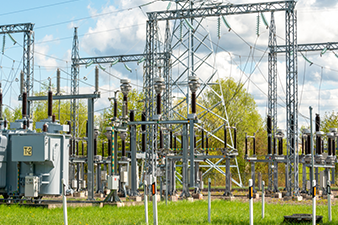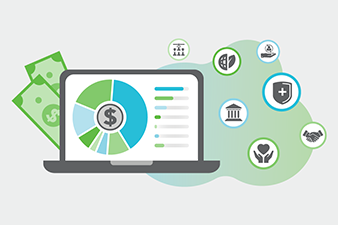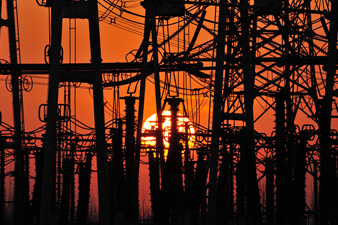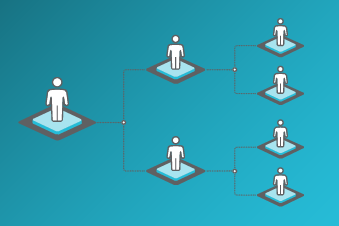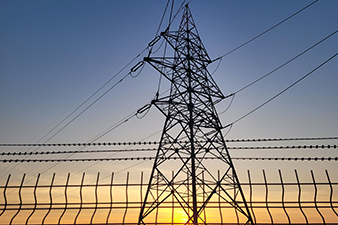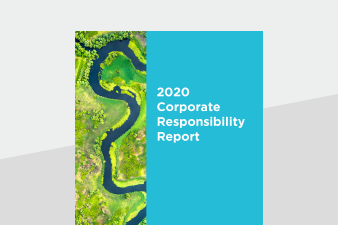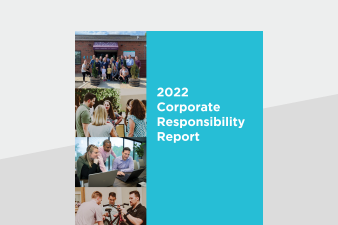
Since the construction of the first central power plant in the United States in the late 19th century, public power have played a crucial role in the electrification of communities and the overall growth of the electric power industry. Throughout the rapid expansion of the mid-20th century, public power remained focused on providing reliable and cost-effective service to under-served areas with a member-first mentality and the assistance of federally supported loans.
During this growth period, the market saw little transformational evolution in the underlying technology involved in the generation and distribution of power: a focus on centralized power stations that leveraged vast transmission and distribution line systems to provide power to major cities and rural farms. Load growth through the decades provided a growing revenue base that directly funded the capital projects needed for these stations and systems, enabling the rapid expansion of the grid. The strategy for public power was simple: focus on meeting growing demand with reliable, low-cost power for members.
But as Nobel Prize winner Bob Dylan sang, “The times they are a’changin’,” and the landscape is no longer quite so simple. Load growth in North America has been stagnant during the new century. Distributed resources are taking hold, and non-traditional players are increasingly involved in energy-related endeavors. Cheap natural gas proposed environmental regulations and other mandates drive changes in power generation portfolios. Evolving regulatory and business models are driving utilities to reconsider industry roles and functions. Public power utilities must learn as they manage through these changes in technology, regulation, and operating models.
The Need for an Electric Utility Strategic Plan
For decades, ScottMadden has been a strategic advisor to utilities and helped energy industry leaders set strategic priorities and connect these to the business to deliver real, lasting results. ScottMadden is actively advising many public power executives and board members today and has recently conducted primary research on the strategic priorities of public power executives in North America. From this experience and research, four strategic priorities emerge that should be on every CEO’s short-list:
- Enhancing Cybersecurity
- Advancing Sustainability
- Improving Financial Performance
- Maintaining Safety and Reliability
Each of the four strategic priorities is briefly summarized below and will be explored further in future publications.
Enhancing Cybersecurity
“We’re in the stone age of cybersecurity. Real learning will only come after the first major incident.”
Dr. Christopher Frei
Secretary General of World Energy Council
The growing threat of digital terrorism has drawn significant attention recently, especially in the energy industry, where cyber threats can significantly impact society. For example, Ukraine fell victim to a significant cyber-attack in late 2015, which caused a six-hour outage for almost 225,000 customers. These attacks also have a financial impact. In 2015 the energy and utilities industry experienced the second-highest average financial impact from cyber-attacks, estimated at more than $12.5 million per company[1]. NERC, The North American Electric Reliability Corporation, developed federal utility cybersecurity standards to defend against these attacks and NERC CIP Version 5 addresses risks to the bulk electric system. Unfortunately, public power utilities comprised mainly of distribution assets are excluded from these regulations and are not required to meet these new requirements. It is never too early to start working on a strategy to protect all critical assets required to deliver energy services. When it comes to maintaining the integrity of the grid, waiting for the first attack is not an option.
Dive into ScottMadden’s report: Enhancing Cybersecurity: A Briefing for Public Power, and consult our Grid Cybersecurity Insights to learn more about cybersecurity strategy.
Advancing Sustainability
Public power utilities have a tremendous opportunity to leverage their community-focused mission and take an even more significant leadership role in advancing the many facets of sustainability.
Changes in environmental regulation and renewable generation technologies that have ushered in a new era of “green power” have forced the entire electric power industry to react. Along with this environmental movement, there is a growing emphasis on power-generating companies’ economic and social impact and the benefits their communities expect them to provide. Companies have responded to these trends in different ways, with many leveraging the opportunity to include sustainability plans within their already established strategic planning processes. Furthermore, companies have completed Sustainability Maturity Assessments, often resulting in the business justification necessary to create new positions or even entire departments, to drive the business value of these integrated sustainability programs. Some companies have moved quickly to reduce their carbon footprints by adopting new technologies for the existing fleets and building cleaner or renewable generation sources. The connection between public power utilities and their local communities provides an excellent foundation to further the utility’s core mission while improving members’ lives. Strategic planning is vital to strike the right balance around the “3P’s” of people, planet, and profit – the biggest challenge to successfully implementing sustainability programs.
View ScottMadden’s report, Advancing Sustainability for Public Power, and learn about integrating sustainability.
Improving Financial Performance
The financial environment for public power has changed as new customer growth has slowed and revenue has flat-lined. In addition, deregulation in many markets has complicated the traditional business model, and power utilities cannot recover costs by simply increasing rates. As Fitch Ratings noted in their 2016 outlook, “A widely observed unwillingness of public power and cooperative issuers to raise rates…in response to economic weakness, increased cost pressures or declining demand could change the sector rating outlook to negative.” The threat of declining consumption, which could negatively impact cost recovery, will persist as the costs for renewable generation continue to decrease while tax incentives remain in place. To preserve a solid financial base on which to operate and perform necessary infrastructure improvements, companies must focus on strengthening the balance sheet through the efficient use of critical resources and the intelligent deployment of capital.
Maintaining Safety and Reliability
Safe and reliable operation of assets remains a cornerstone of public power, as it does for the broader power generation industry. However, as the level of visibility regarding industrial accidents has risen, the tolerance for allowable events has predictably dropped. Likewise, the pervasive and critical use of electricity for commerce and transportation leaves most customers more dependent than ever on an uninterrupted power supply. As a result, electric utilities must prioritize safety for employees and the public above all other factors, followed closely by a commitment to a reliable power supply.
Conclusion
The challenges ahead may seem daunting. In fact, at no point in the last 100 years has the industry faced more fundamental changes spurred by new government policies, emerging technologies, and environmental issues. The strategic priorities mentioned above, among other matters, must be afforded significant focus by leadership to ensure companies are prepared to respond to these changes and continue meeting the mission of delivering low-cost and reliable power to member-owners. Public power is uniquely situated to think strategically and address these challenges with a power utility strategy.
A series of focused publications on each of these priorities will further detail some of the challenges and opportunities that public power is facing. ScottMadden, an experienced strategic advisor to utilities, recommends taking the time to confront these challenges head-on by developing a robust strategic plan for utilities to address these important topics.
[1] Source: Ponemon Institute of Cyber Crime, Report, 2015

